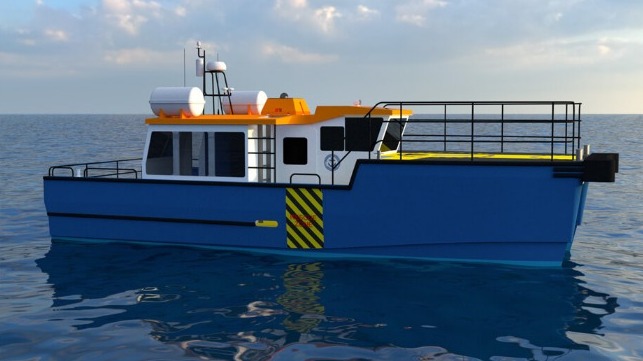Construction Begins on First Mini-Crew Transfer Vessel for US Offshore Wind

The development of the U.S. offshore wind energy industry continues to contribute to the supporting industries with shipbuilding being one of the sectors to benefit. U.S. shipbuilder Edison Chouest is highlighting that work has begun on another first-of-its-kind vessel for the U.S. industry, a mini-crew transfer vessel.
Work began in July for the 39-foot vessel which will be a daughter craft working in conjunction with the service operation vessel (SOV) that Chouest is also building. Both vessels are due to enter service in 2024. Designed by the UK’s Chartwell Marine, the vessel supplies another critical piece of the maintenance and operations aspect required for offshore wind farms. The vessel will operate for joint-venture partners Ørsted and Eversource to service their three wind farms Revolution Wind, South Fork Wind, and Sunrise Wind in the Northeast U.S.
Chartwell’s managing director Andy Page highlights while the vessel is small it is essential in the chain connecting the SOVs and turbines. With a capacity of up to 12 personnel, the mini-crew transfer vessel is designed to be deployed from the SOV during extended offshore stays. As a daughter craft, its role is to transfer staff including engineers and maintenance personnel from the SOV to turbines, vessels, and other critical project infrastructure.
The vessel was customized to the U.S. market and the needs the joint venture partners anticipate for their three sites. Chartwell conducted model testing in January 2023 to simulate and adapt to the specifications of the wind turbines that will be installed at the Northeast US project sites. According to Chartwell and Edison Chouest Offshore, the design responds to the increasing demand in the U.S. offshore wind market for low-emissions, cost-effective support vessels, with the catamaran’s optimized hull form offering efficient fuel use as well as stability and maneuverability in choppy waters.
Among the features, and a first for this vessel type, is the Volvo Penta IPS (integrated propulsion system) which will provide high power. The system allows for a wide number of optional features and functions, featuring forward-facing, twin counter-rotating propellers with an individually steerable IPS under the hull. The design also was adapted to use a motion-compensated hoist solution that will enable the technician to “walk to work” between the small vessel and the offshore wind turbines.
